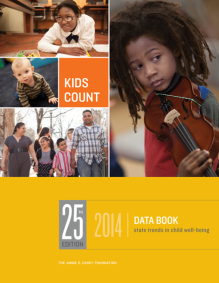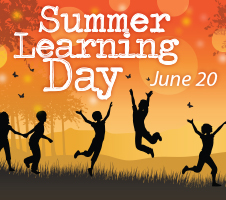Today’s guest post is written by Ken Wenglewski, Manager of the Neighborhood Revitalization Program. Last month, Ken had a chance to see firsthand the challenges and rewards of running a public school. We thought his experience was a great way to show how people can create and maintain links between schools and the neighborhoods.
 On April 5th, I had the wonderful opportunity to participate in Tulsa Public Schools’ “Principal for a Day” at Rogers High School, under the leadership of Stacey Vernon. Stacey was awarded Principle of the Year so it was an honor to shadow her work.
On April 5th, I had the wonderful opportunity to participate in Tulsa Public Schools’ “Principal for a Day” at Rogers High School, under the leadership of Stacey Vernon. Stacey was awarded Principle of the Year so it was an honor to shadow her work.
Coming to Rogers was a bit surreal. My wife attended Rogers so walking the halls was very nostalgic.
My day started by working with the Assistant Principal Kendra Bremlett. We talked about her role as support for Stacey. We also spoke of the exciting things that will be happening this Fall with the implementation of College Summit; one of our department’s educational partners.
Later, Stacy took over and we met with April Dalto, a science teacher who had her class cook hotdogs with natural sunlight. The class was energetic, engaged and very creative.
Back in Stacy’s office, I was offered the opportunity to communicate through an Auto-dialer system called School Connects. I read a script out loud, on the phone, telling parents to show up at a bowling event. I had a blast sounding like a DJ for a radio station!
There was another memorable moment back at Stacey’s office. She has a pinball machine in the back office that she likes to use when she isn’t buried in instructional leadership duties. Needless to say, it isn’t used very often.
To that point, the most amazing thing that I observed with Stacey was her ability to know all of the students by name. (more…)
Read Full Post »
 The Annie E. Casey Foundation has been tracking child well-being in their annual KIDS COUNT Data Book for the past 25 years. The data in the 2014 report continues to measure indicators in four domains: 1) Economic Well-being, 2) Education, 3) Health, and 4) Family and Community. The figures are based on data as recent as 2012.
The Annie E. Casey Foundation has been tracking child well-being in their annual KIDS COUNT Data Book for the past 25 years. The data in the 2014 report continues to measure indicators in four domains: 1) Economic Well-being, 2) Education, 3) Health, and 4) Family and Community. The figures are based on data as recent as 2012. For more than a century, educators have documented, studied and tried to combat summer learning loss. It has become well known that all children are prone to losing math skills during the summer, and modern studies show the loss of reading skills is also an issue, especially among children from low-income families.
For more than a century, educators have documented, studied and tried to combat summer learning loss. It has become well known that all children are prone to losing math skills during the summer, and modern studies show the loss of reading skills is also an issue, especially among children from low-income families. In Oklahoma, it is estimated 49% of households live in a persistent state of financial insecurity, with no little or no savings to cover emergencies. This is up from last year’s estimate of 43.8% of Oklahomans who were considered “liquid asset poor.” Poor showings in areas related to income, assets, healthcare and education contributed to Oklahoma’s overall rank of 31, compared to other states.
In Oklahoma, it is estimated 49% of households live in a persistent state of financial insecurity, with no little or no savings to cover emergencies. This is up from last year’s estimate of 43.8% of Oklahomans who were considered “liquid asset poor.” Poor showings in areas related to income, assets, healthcare and education contributed to Oklahoma’s overall rank of 31, compared to other states. and others are trying to raise awareness of loan repayment and forgiveness options (See:
and others are trying to raise awareness of loan repayment and forgiveness options (See:  And we’re not alone in our concern, either. Researchers at the University of Chicago have found that preschool students do, in fact, miss a lot of school. Their recent report,
And we’re not alone in our concern, either. Researchers at the University of Chicago have found that preschool students do, in fact, miss a lot of school. Their recent report, 
 On April 5th, I had the wonderful opportunity to participate in Tulsa Public Schools’ “Principal for a Day” at Rogers High School, under the leadership of Stacey Vernon. Stacey was awarded Principle of the Year so it was an honor to shadow her work.
On April 5th, I had the wonderful opportunity to participate in Tulsa Public Schools’ “Principal for a Day” at Rogers High School, under the leadership of Stacey Vernon. Stacey was awarded Principle of the Year so it was an honor to shadow her work. ned to make contributing as easy as possible by allowing relatives and extended family to deposit money by mail, online, or in person. There is no minimum deposit amount required, so families can give what they can afford, when they can afford it. Partnerships with local foundations, organizations and businesses also provide matching funds for promotions that encourage families to save regularly and speed the growth of account balances.
ned to make contributing as easy as possible by allowing relatives and extended family to deposit money by mail, online, or in person. There is no minimum deposit amount required, so families can give what they can afford, when they can afford it. Partnerships with local foundations, organizations and businesses also provide matching funds for promotions that encourage families to save regularly and speed the growth of account balances. among the states in Early Childhood Education participation, an especially relevant figure since CAP Tulsa is an early childhood program provider. The state can also boast of a low unemployment rate, the fifth best in the country. However, the high marks do not carry over to other areas of the Scorecard.
among the states in Early Childhood Education participation, an especially relevant figure since CAP Tulsa is an early childhood program provider. The state can also boast of a low unemployment rate, the fifth best in the country. However, the high marks do not carry over to other areas of the Scorecard. bers from the
bers from the 
